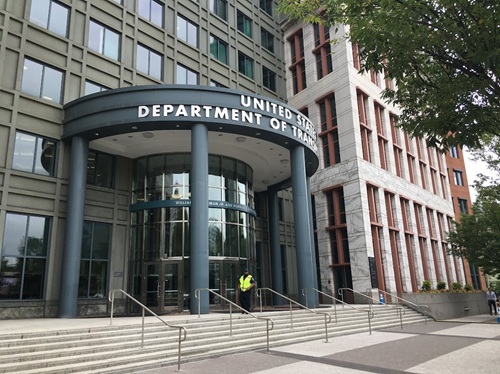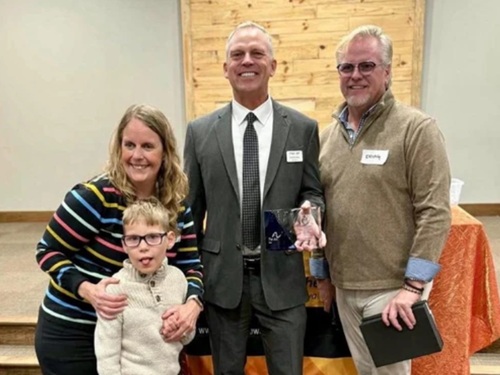Technology and the data it provides are key to “re-imagining” and re-shaping transportation infrastructure in the very near future, according to participants in the “Smart American City” roundtable event hosted by media company Axios in Washington D.C. on December 12.
The roundtable featured conversations with: Jeff Marootian (above at left), director of the District Department of Transportation; Hicham Abdessamed, chief executive-global social innovation business for Hitachi Ltd., which sponsored the event; Rep. Yvette Clarke, D-N.Y. and Rep. Susan Brooks, R-Ind.; and Kim Nelson, executive director state and local government solutions for Microsoft.

DDOT’s Marootian noted that the “marriage” of technology and transportation infrastructure will be critical to re-designing major thoroughfares, “making them more usable and friendly for pedestrians, bike, and bus riders, as well as cars.”
The agency is also looking to use technology to help “improve the quality of public transportation” in Washington D.C. by “improving the ridership experience” and using it to provide “transit traffic signal priority so we can move buses through intersections more quickly” and thereby speed up overall traffic flow through intersections.
Technology will also be key to improving “curbside management,” Marootian explained.

“We’ve had to re-imagine how the curbside works. Ten years ago, the pressures on curbside space was totally different. Now we have food and commercial delivery [trucks], scooters, plus ride-share passenger pickup and drop off all vying for the same space,” he said. “So now we’re testing a ‘curbflow reservation system’ so, for example, delivery trucks don’t have to continuously circle around the block. We’ve also seen a 64 percent reduction of double-parking in bike lanes and crosswalks where this technology has been deployed.”
Marootian added that “we are pretty bullish on 5G as a city – not just for improving transportation but providing significant quality of life benefits across the board.”

That’s why Rep. Clarke – who, with Rep. Brooks, are members of the Congressional Smart City Caucus formed in 2018 – stressed that “technology is driving all of our lives” and will play a key role in making transportation in and around cities more efficient and sustainable.
But the challenge is that technological development is in many ways outstripping rules and regulations meant to make it safe, said Rep. Brooks. Many Americans “don’t realize how close autonomous vehicles are to reality and how soon they will be on the street – that’s why it is important to get everything right from the beginning.”
She added that technology leaders “need to work together hand-in-hand with regulators, law enforcement, and other experts, so we do not come in with rules and regulations that tamp down and kill innovation. It takes a long time to get [legislation] to pass – and will it be obsolete when passed?”

As part of that issue, Hitachi’s Abdessamed pointed out that one of the benefits of “getting things right” from a data and technology perspective is that it can improve infrastructure transportation efficiency often without the need to add more capacity.
“Data and technology sit at the core of how to retrofit cities to address issues such as traffic congestion,” he explained. “in another example, it allows you to look at value chain of buses and trains, harness available and historical data, analyze it, then use it to make life easier – such as the real-time dynamic scheduling for trains and buses based on demand.”
Abdessamed also emphasized that autonomous driving and transportation electrification will not happen without data monitoring and governance and that state governments will be key to getting data to “cross boundaries” smoothly and quickly.
“We believe data is the currency of the digital economy – and that we need to harmonize and protect data the right way so it thrives,” he said. “And when that happens it can provide real-time predictive capabilities – solving problems while providing economic, societal, and environmental benefits.”
 Top Stories
Top Stories
USDOT Issues $1B in Local Road Safety Funding
January 2, 2026 Top Stories
Top Stories

